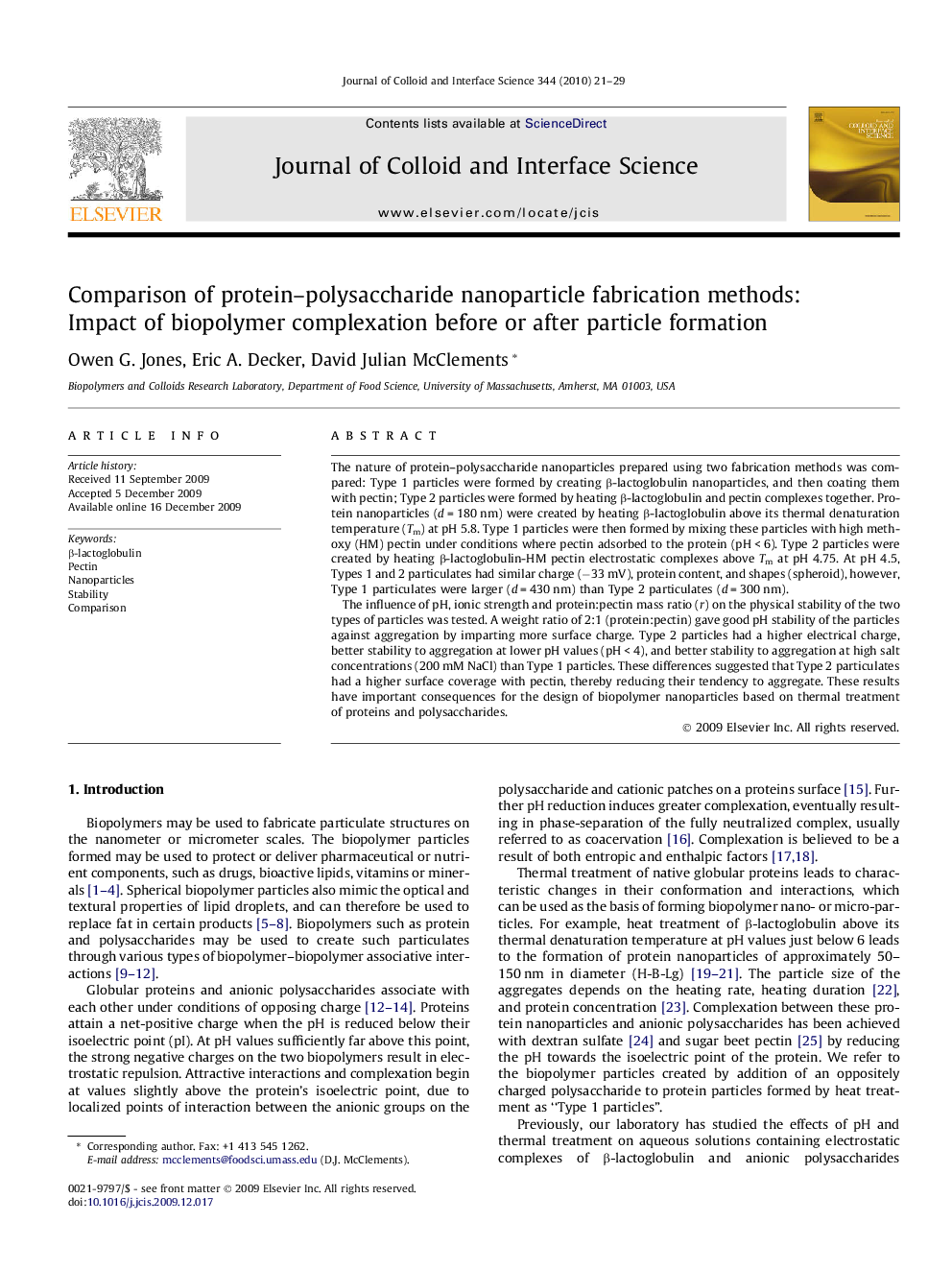| کد مقاله | کد نشریه | سال انتشار | مقاله انگلیسی | نسخه تمام متن |
|---|---|---|---|---|
| 610216 | 880643 | 2010 | 9 صفحه PDF | دانلود رایگان |

The nature of protein–polysaccharide nanoparticles prepared using two fabrication methods was compared: Type 1 particles were formed by creating β-lactoglobulin nanoparticles, and then coating them with pectin; Type 2 particles were formed by heating β-lactoglobulin and pectin complexes together. Protein nanoparticles (d = 180 nm) were created by heating β-lactoglobulin above its thermal denaturation temperature (Tm) at pH 5.8. Type 1 particles were then formed by mixing these particles with high methoxy (HM) pectin under conditions where pectin adsorbed to the protein (pH < 6). Type 2 particles were created by heating β-lactoglobulin-HM pectin electrostatic complexes above Tm at pH 4.75. At pH 4.5, Types 1 and 2 particulates had similar charge (−33 mV), protein content, and shapes (spheroid), however, Type 1 particulates were larger (d = 430 nm) than Type 2 particulates (d = 300 nm).The influence of pH, ionic strength and protein:pectin mass ratio (r) on the physical stability of the two types of particles was tested. A weight ratio of 2:1 (protein:pectin) gave good pH stability of the particles against aggregation by imparting more surface charge. Type 2 particles had a higher electrical charge, better stability to aggregation at lower pH values (pH < 4), and better stability to aggregation at high salt concentrations (200 mM NaCl) than Type 1 particles. These differences suggested that Type 2 particulates had a higher surface coverage with pectin, thereby reducing their tendency to aggregate. These results have important consequences for the design of biopolymer nanoparticles based on thermal treatment of proteins and polysaccharides.
Biopolymer nanoparticles can be formed using two methods: Type 1 particles are formed by creating β-lactoglobulin nanoparticles by heating, and then coating them with pectin; Type 2 particles are formed by heating β-lactoglobulin and pectin complexes together.Figure optionsDownload high-quality image (130 K)Download as PowerPoint slide
Journal: Journal of Colloid and Interface Science - Volume 344, Issue 1, 1 April 2010, Pages 21–29